Private construction and use of a soft roof topic quite relevant ...
|
|
Excellent appearance, excellent technical characteristics and enough ... |
After the installation of drywall, the walls in the room remain uneven and have incomplete ... |
DIY wood drying camera
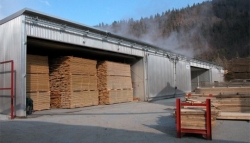
There is not a single woodworking enterprise that can do without the drying of wood. To prevent the occurrence of various defects, it is customary to use a special technology for drying wood in a drying chamber. If you yourself want to engage in the production of wood products, you will also need a drying chamber for drying wood. Today we will talk about how to make it correctly.
Content:
- The need for wood drying
- The concept of moisture of wood
- Wood drying modes
- The concept of a drying chamber
- Types of drying chambers
- Wood drying procedure
- Production of a drying chamber
The need for wood drying
How to dry the board with qualitatively and quickly? This issue is interested in each carpenter from ancient times. People have long been in storage of forest for many years in order to have time to dry it evenly. Grandfather harvested a tree for his grandson, using the very material that his grandfather left him.
The importance of properly dried wood is colossal! For example, if the wooden furniture that is located in the room is made of too wet wood, which is just cut, then it will dry out over time, because the tree can dry out and decrease in size, which means it will spoil!
If the door to the house is made of overly dried wood, then it will swell over time and will not be able to close! If the door from the workpieces is scored, which is unevenly dried in volume, then it can burst or it will crumble! Therefore, it is recommended to dry all wood blanks. In addition, drying protects the material from damage by wood with a wooden fungus, prevents the size and shape of the tree, improves the physical and mechanical properties of wood.
Drying wood is a long, complex and expensive procedure. The tree according to traditional technologies is heated by overheated steam or hot air. Drown wood can be transported and stored longer. In addition, it does not deform during operation. Drying boards are performed in steam chambers, where the possibility of internal damage is excluded.
The concept of moisture of wood
For a complete perception of the essence of the drying process, you should plunge a little into the theory. The procedure for removing moisture made of wood is not entirely simple, because in the material itself there are two types of moisture. Wood consists of elongated plant cells. Moisture can be located in the walls of the cells and in their cavities, filling the microcapicular system. Moisture that is present in the spaces between the cells and in their cavities is called free intercellular, and moisture in the cell walls associated intracellular.
The content in the wood of associated moisture is limited. The condition when the walls of the cells differ in maximum humidity in contact with liquid moisture is called the limit of their saturation. It is generally accepted that the humidity of the saturation limit does not depend on the breed and is on average 30%. If the moisture content of the tree is higher than 30%, then it contains free intercellular moisture. The wood of freshly chopped or growing wood has moisture more than the limit of saturation, that is, it is raw.
Depending on the purpose of the blanks made of wood, it is customary to dry wood in different ways. The wood is dried to a humidity of 6 - 8 %, when the material is necessary for the machining and assembly of products for high -precision compounds that affect operational indicators (production of skis, parquet or musical instruments).
Transport humidity is 18,22 %. It is with this water content that lumber is suitable for transportation over long distances in a warm season. The wood dried to such humidity is used mainly in standard housing construction, in the production of ordinary containers and when there is no need for interchangeability during assembly.
The carpentry humidity is divided into several subspecies. Chasing products (terrace board, sheathing, floor board, cashing) should have a moisture content of 15 2%. Wood products (windows, doors, stairs and interior elements) made of whole or glued wood, withstand fluctuations in humidity from 8 to 15 %.
The humidity is furniture, depending on the level of the product and the use of whole or glued wood, is 8 2%, because it is with such humidity that the tree demonstrates the most optimal characteristics for processing, gluing and subsequent operation. But it is usually customary to lower humidity to 7-10%, making partial sterilization of wood and taking into account the uniformity of humidity throughout the tree, preserving the mechanical properties of the material, the absence of surface and internal cracks.
Wood drying modes
Depending on the requirements that are presented to the quality of the tree, lumber can be dried with different modes that differ in temperature levels. In a mini drying chamber for wood during the drying process, the air temperature gradually increases along the steps and the relative humidity of the agent decreases. Drying modes are chosen taking into account the thickness of lumber, wood species, final humidity, the quality category of the dried tree and the structure of the chamber.
The modes of the low and high-temperature process are distinguished. The first modes provide for the use of wet air as a drying agent, the temperature of which in the initial stage is less than 100 degrees. Three categories of these modes have been established:
- The soft regime is able to provide infectious drying of the material while maintaining the natural physical and mechanical properties of the tree, including color and strength, which is important for drying wood to the transport humidity of export lumber.
- The normal regime guarantees infectious drying of wood with almost complete maintaining the strength of the material with minor color changes, which is located for drying lumber to the final humidity.
- The forced regime remains strength for static bending, compressing and stretching, but it is possible to slightly reduce the strength to splitting or racing with darkening of wood, which is intended for drying wood to operational humidity.
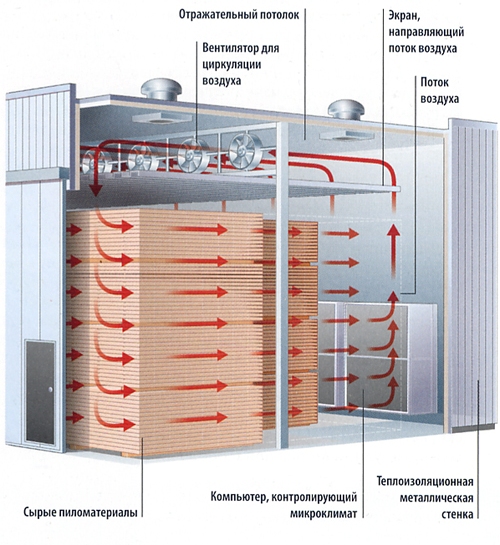
According to low -temperature regimes, a three -stage change in the parameters of the drying agent is expected, and from each stage to the subsequent transition can be carried out only after the material reaches a certain level of humidity, which is provided according to the regime.
High -temperature regimes provide for a two -stage change in the indicators of the drying agent, and you can switch from the first stage to the second after reaching the transition humidity of 20%. The high -temperature regime is determined, depending on the thickness and rock of lumber. High -temperature modes can be used for drying wood, which goes to the manufacture of non -carrying elements of buildings and structures, in which darkening of wood and decrease in strength are allowed.
The concept of a drying chamber
Chamber drying is the main way of drying wood. Drying chambers are required for drying coniferous and deciduous wood to different categories of quality. One of the most popular and economical techniques of artificial dehydration of lumber is drying when tied and free moisture is removed from wood by supplying warm air to a wet wood with hot air and the monastery of the ev -to -ecked moisture moisturized and partially chilled air.
The drying camera is a completely ready -made installation, which is equipped with everything necessary for drying wood with equipment. According to the device, drying chambers for wood are divided into collective-metallic and made from building materials. The latter are built directly in the workshops or as individual buildings from materials, which are widely used in industry. The camera can be completely made of monolithic reinforced concrete. Its walls can be laid out of full red brick, and an overlap from monolithic reinforced concrete.
If several dryers are used, they are often combined into a single block, constructing a common control corridor, where heat supply wiring and an automatic control system of all cameras are placed. Depending on the volume of loaded wood into the chamber, it can be horizontal or vertical-transverse circulation of air.
Loading lumber into the camera can be carried out in the following ways: on trolleys in the form of stacks along the rail track, like packages with a fork loader. The transfer of heat to wood can be performed by: air, combustion products or overheated ferry; radiant warmth that comes from special emitters; a solid body if you organize contact with a heated surface; current, which passes through moist wood; High -frequency electromagnetic field that penetrates a wet tree.
Equipment for a drying chamber for wood is divided into basic and additional. The main fan system, the heat supply system, supply and exhaust ventilation and moisture are reckoned to the main one, the door insulated and psychrometric unit, sub-power trolleys, and the fan drive of the drive are attributed to additional.
The process of dried wood in the chamber can be automated. Automation is able to maintain at a given level the humidity and temperature of the medium in the dryer. The temperature is regulated by the supply of the coolant to the caloriece or by turning on-off the electric heater, and the humidity by using supply and exhaust ventilation and moisturizing system.
In the system for driving wood, the possibilities of remote control and temperature in the chamber may include the possibilities of remote control. When drying lumber in the drying chamber, there is a need to control the moisture content of wood, for which the remote moisture meter is used, which allows you to check the moisture content of the tree at several points without entering the chamber. In the absence of external heat supply sources, autonomous heating modules can be used and gas, coal, wood waste, electricity and diesel fuel can be used.
Types of drying chambers
In real life, it is customary to use the following types of drying chambers. The necessary energy in convective drying chambers into the material is transported using the air cycle, and the heat transfer of wood occurs through convection. Convective cameras are two types of tunnel and chamber.
Tunnel convection drying chambers are deep cameras, where packs of stacks from the wet end are pushed to a more dry one. These cameras must be filled from one end, and from the other they are devastated. The pushing of stacks (the process of filling the cameras and devastation) is performed in one stack with an interval of 4 to 12 hours. These cameras are designed for large sawmills and allow you to make exclusively transport drying of a tree.
Chamber convection drying chambers are shorter than tunnel and vacuum drying chambers for wood, the same parameters are supported in the process in the process. At a depth of blowing more than 2 meters to equalize the conditions of wood drying, the methodology for reverse the direction of ventilation is used. The devastation and filling of the camera occurs on one side if it has one door. Other loading systems are also known, which are similar to the procedure for loading tunnel chambers. You can dry any lumber to any final moisture, so 90% of the wood of Europe and Russia is dried precisely in chamber dryers.
The condensation drying chamber differs from the previous ones in that the humidity that occurs in the air condenses on special coolers and comes out of the drying process of water. The efficiency of such a process is large, but the cycle is long, because the devices do not work at high temperature, and the total heat losses are also significant. The condensation chamber is suitable mainly for drying small volumes of wood, or for drying a dense breed of oak tree, beech or ash. The great advantage of such cameras is that the boiler room is not needed, the price of drying chamber for wood and the cost of drying are less.
Drying chambers are also classified according to the circulation method and the nature of the drying agent used, the type of fence and the principle of action. Drying chambers of periodic action are characterized by the fact that they can be loaded completely for simultaneous drying of all material, and the wood drying mode changes in time, at the moment remaining the same for the entire chamber.
According to the method of circulation, there are cameras with an incentive and natural circulation. Drywalls with natural circulation are outdated, low -performance, drying mode in them is almost not controlled, the uniformity of drying the tree is unsatisfactory. For modern construction, such devices are not recommended, and the actors must be modernized. Distinguish between the drying agent of the camera gas, air and high -temperature, which operate in the environment of an overheated steam.
Wood drying procedure
Previously, before drying, along the selected mode, the tree is heated by steam, which is served through moisturizing pipes when operating fans included in heating devices and closed exhaust channels. First you need to calculate the drying chamber for wood. The agent’s temperature at the beginning of the wood heating should be higher by 5 degrees the first stage of the regime, but not more than 100 degrees Celsius. The saturation level of the medium should be for a material with initial humidity more than 25% 0.98 - 1, and for wood with a moisture content of less than 25% - 0.9 - 0.92.
The duration of the initial heating depends on the wood breed and is for conifers (pine, spruce, fir and cedar) 1 - 1.5 hours per centimeter of thickness. The duration of the heating of soft deciduous deciduous rocks (aspen, birch, linden, poplar and alder) increases by 25%, and for solid deciduous rocks (maple, oak, ash, grab, beech) - by 50% compared to the duration of heating of conifers.
After preliminary heating, it is customary to bring the dryer drying agent parameters to the first stage of the regime. Then you can proceed to drying the lumber in compliance with the established mode. Humidity and temperature regulate the valves on steam pipelines and gaps of sugary and exhaust ducts.
In the process of operation of the infrared drying chamber for wood, residual stresses occur in the tree, which can be eliminated by intermediate and final moisture -fluiding in the environment of increased temperature and humidity. It is customary to expose lumber, which are dried to operational humidity and subject to machining in the future.
Intermediate moisture -fluid is performed during the transition from the second stage to the third or from the first to the second with high -temperature mode. Moisture processing is subjected to coniferous rocks with a thickness of 60 millimeters and deciduous decidation of 30 millimeters. The temperature of the medium during the heat use of the heat treatment should be higher by 8 degrees of the temperature of the second stage, but not higher than 100 degrees, with a saturation level of 0.95 - 0.97.
When the wood reaches the final medium humidity, the final moisture -fluid can be carried out. In this process, the temperature of the medium is maintained 8 degrees above the last stage, but not higher than 100 degrees. At the end of the final moisture processing, the tree that has undergone drying must be kept in the cells for 2 to 3 hours at parameters, which is provided for by the last stage of the regime. Then the drying chamber is stopped.
Production of a drying chamber
If you decide to make wood products with your own hand, then you just need a drying camera for a tree. However, during the construction of the dryer, observe all the required norms. You need a camera, fan, insulation and heating device.
Build a dryer or highlight a separate room, one wall and ceiling of which will be made of concrete, and other walls made of wood that need to be insulated. To do this, it is customary to create several layers: the first of them is a foam, the second wooden boards, which are usually wrapped in foil in advance.
After that, the heating element should be installed, which can be made in the form of batteries. In batteries, water must be served from a stove in which it will heat up to 60-95 degrees Celsius. It is advisable to continuously provide water circulation using water pumps in a heating element. Also, in a homemade drying chamber for wood should be placed a fan, which contributes to the distribution throughout the room of warm air.
Think about how the wood will load into the drying chamber. One of the loading options may be a rail trolley. To adjust the humidity and temperature in the room of the drying chamber, the corresponding thermometers must be used in the working area - wet and dry. Provide the shelves inside the dryer to increase the working space.
In the process of drying the lumber, a sharp change in temperature in the working room is not allowed, otherwise this will provoke the fact that the wood will be crumpled or cracks will occur in it. When erecting a drying chamber, it is extremely important to observe fire requirements. Therefore, in the immediate vicinity of the dryer, install fire extinguishers without fail.
And finally, remember that instead of a heating element at home, you can use an electric stove for two burners. You can insulate the walls of the drying chamber with your own hands using wooden chips. Instead of foil in the chamber with a foam, which is able to provide good reflection from the surface of the heat. In such a dryer, wood is dried in preliminarily in 1-2 weeks.

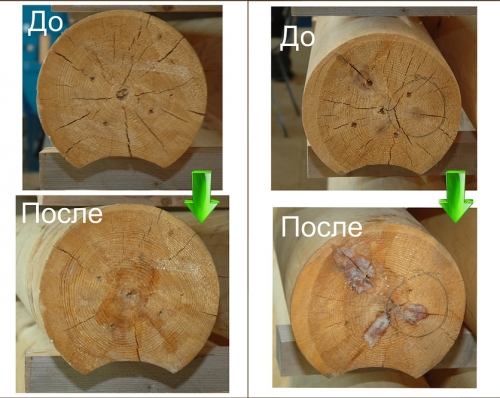
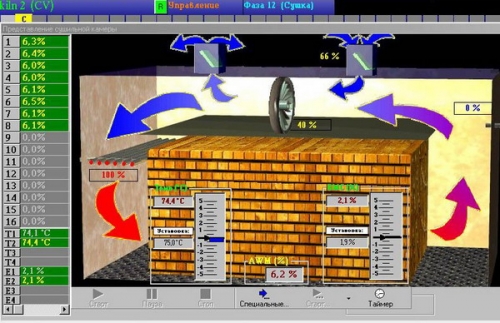
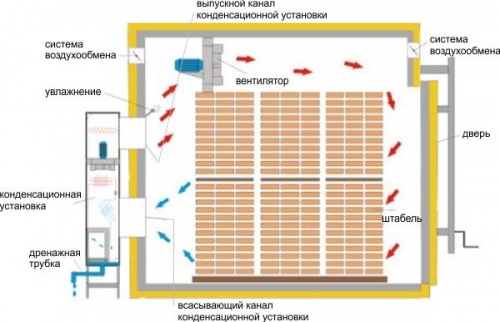
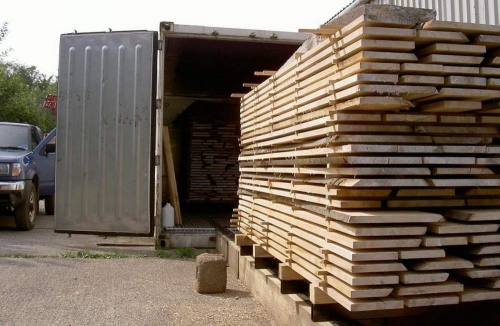
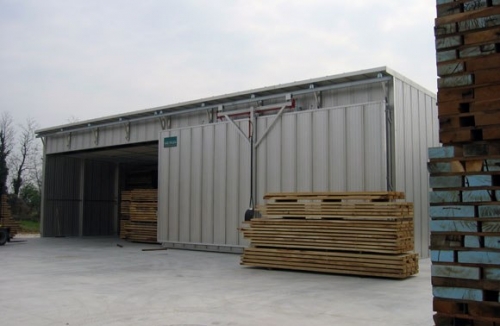
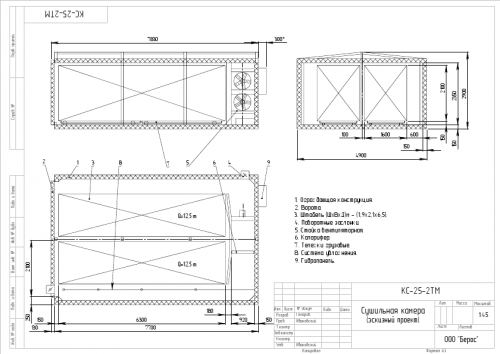
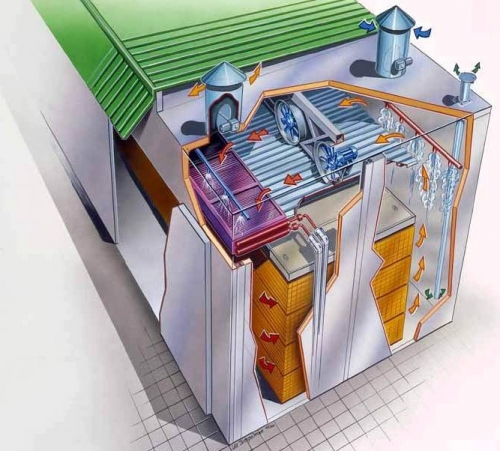
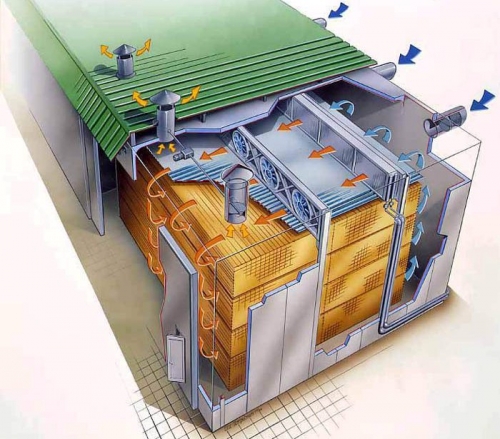
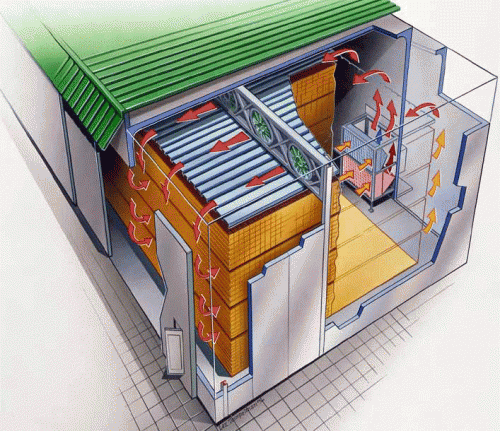
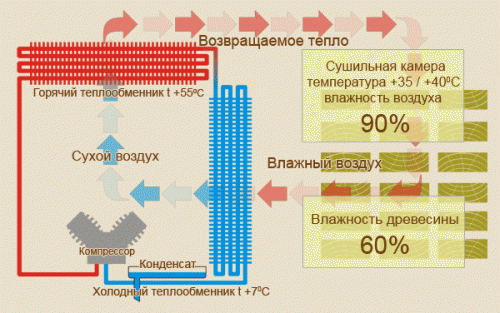
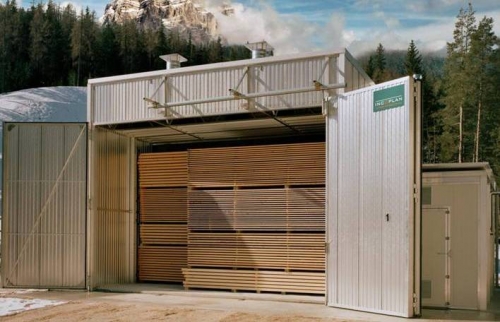
I would add to
I would add to high-quality drying-the press of vacuum drying chambers of the PVSK, which in 18-20 hours allow you to dry lumber without a marriage with very high quality. The wood after a vacuum drying press is more dense, preserved by decay products, less absorbs moisture during the manufacture of the product and is well polished.
Comment written below
The comment that is written below I have already met on 2 different sites. Explorer :)
How and from what to do
And how and from what to make a drainage, condoing installation?